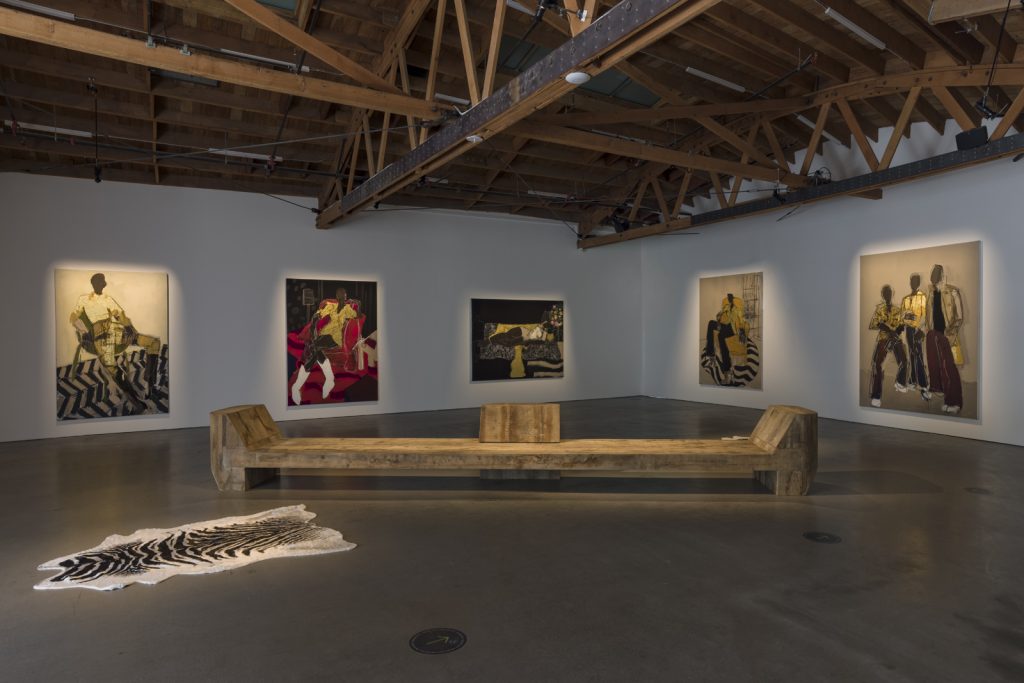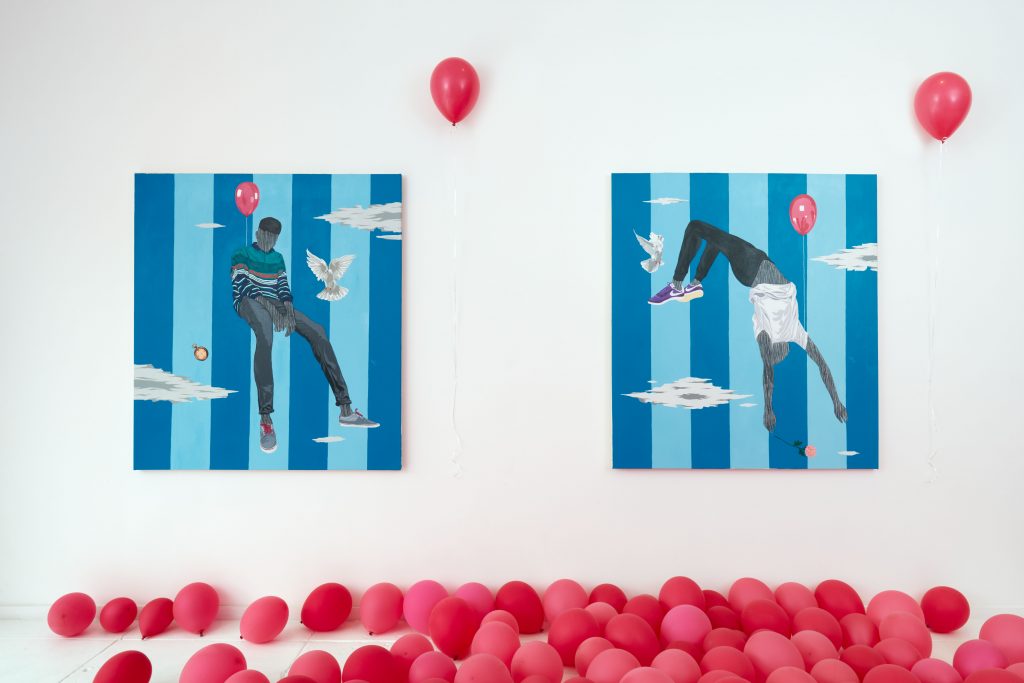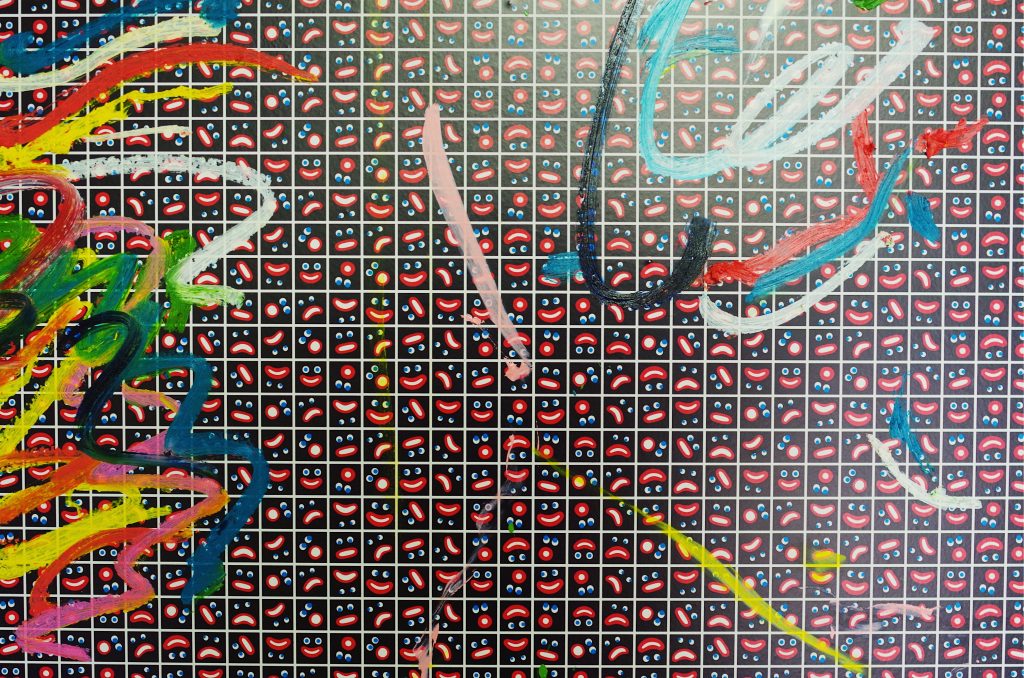Five Colorful, Emotional + Powerful Art Shows in Los Angeles
From group shows to debut solo exhibitions, some of the season’s special art experiences

While many galleries have been open by appointment, Angelenos have been patiently waiting for the museums to reopen after a long pandemic hiatus. For many months The Made in LA: A Version Biennial has been installed at the Hammer Museum and Huntington Gardens and Library with only a few site-specific experiences available for public viewing, but now both museums have reopened. At LACMA‘s BCAM building, Cauleen Smith’s Give It Or Leave It lights up the ground floor, while a major Yoshitomo Nara exhibit fills the second floor with dozens of large paintings, a recreation of his drawing studio and wall of the artist’s favorite vinyl records. In Exposition Park at the California African American Museum (CAAM), the Smithsonian Institution Men of Change honors iconic leaders of the Black community with portraits. Also on view at CAAM, Sula Bermudez-Silverman’s astonishing biographical show Neither Fish, Flesh, nor Fowl features pieces made from materials that are innately meaningful.
Plenty of smaller Los Angeles gallery shows also share vibrant and emotional work. The current offerings at local galleries provide the opportunity to experience recently made painting, sculpture, video and beyond. From group shows to solo exhibitions, here are some of the standouts currently open in Los Angeles.

Shattered Glass at Jeffrey Deitch
Featuring work by 40 artists, Shattered Glass (open until 22 May) offers a bold and arresting experience. Curated by Melahn Frierson and AJ Girard, the show features work that explores—and defies—the age-old power structure within the art world. Highlights include Murjoni Merriweather’s sculptures made from ceramic and braided synthetic hair and Lauren Halsey’s “land of sunshine wherever we go” rock formation sculpture. There are also stunning paintings by Mr Wash (aka Fulton Leroy Washington), Amani Lewis, Kezia Harrell, Raelis Vasquez, as well as 10 video works. The effect of seeing all this art displayed together can be dizzying, but ultimately inspiring.

Positions of Power at UTA Artist Space
The UTA Artist Space has a surprise in store for visitors walking in to see LA-based Ferrari Sheppard’s Positions of Power (on view until 15 May). The galleries are dimly lit, with spotlights glowing on each painting to emphasize the drama of each portrait and highlight each work’s layers. Sheppard’s dynamic portraits combine figurative and abstract elements. These large paintings (made using acrylic and charcoal, with flecks of gold leaf) are displayed in the striking setting with a massive Rick Owens wood bench in the middle of the gallery.

21 Arrows at Huma House
Born in Iran, Omid Mokri studied at the prestigious Honarestan-e Honarha-ye Ziba art school in Tehran and later attended RISD and Cal Arts. Most of the works in Mokri’s 21 Arrows show (open through 13 May) were created during the year he was incarcerated. The artist used pillowcases and sheets as canvases, made his own paint by grinding down the pigments from colored pencils, and fashioned paintbrushes from plastic spoons and his own hair. The act of making this art is undoubtedly art itself. With the intention to humanize those who are dehumanized in the carceral system, the pieces within this show are simultaneously delicate and powerful.

Life After Life at Rele Gallery
Nigerian artist Ameh Egwuh’s solo exhibition Life After Life (on display until 8 May) takes its name from psychiatrist Raymond Moody’s 1975 book, in which he interviewed people who had near-death experiences. Exploring life, death, rebirth and time, Egwuh’s paintings feature blue-striped backgrounds and pink balloons, but each features different symbols and figures. The artist planned the dreamlike exhibition to take place in a space also filled with pink balloons, which adds another surreal layer to the experience.

The Great American Fact at Hauser & Wirth
Amy Sherald’s first West Coast solo exhibition The Great American Fact (open until 6 June) also takes its name from the literary world; in 1892 Anna Julia Cooper—an author, activist, educator and sociologist—wrote that Black people are “the great American fact.” Sherald uses Cooper’s concept as the foundation for five new paintings depicting “public Blackness”—”the way Black American identity is shaped in the public realm.” These gloriously colorful and rich paintings depict Black people in everyday situations, from hanging out by a car to cycling and surfing. Sherald rebuffs reductive concepts about Black existence, while celebrating Black people by “paint[ing] the things I wish to see,” she says.
Hero image by Paul Salveson, courtesy of Rele Gallery and Ameh Egwuh












